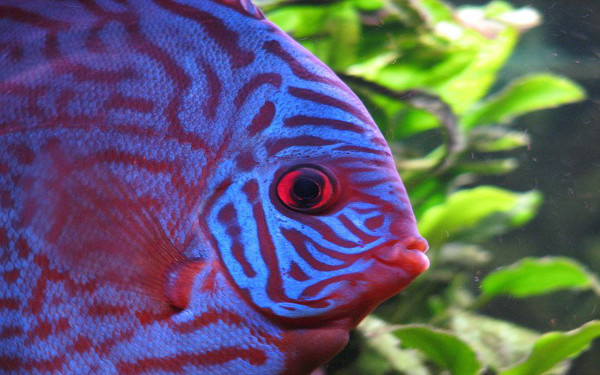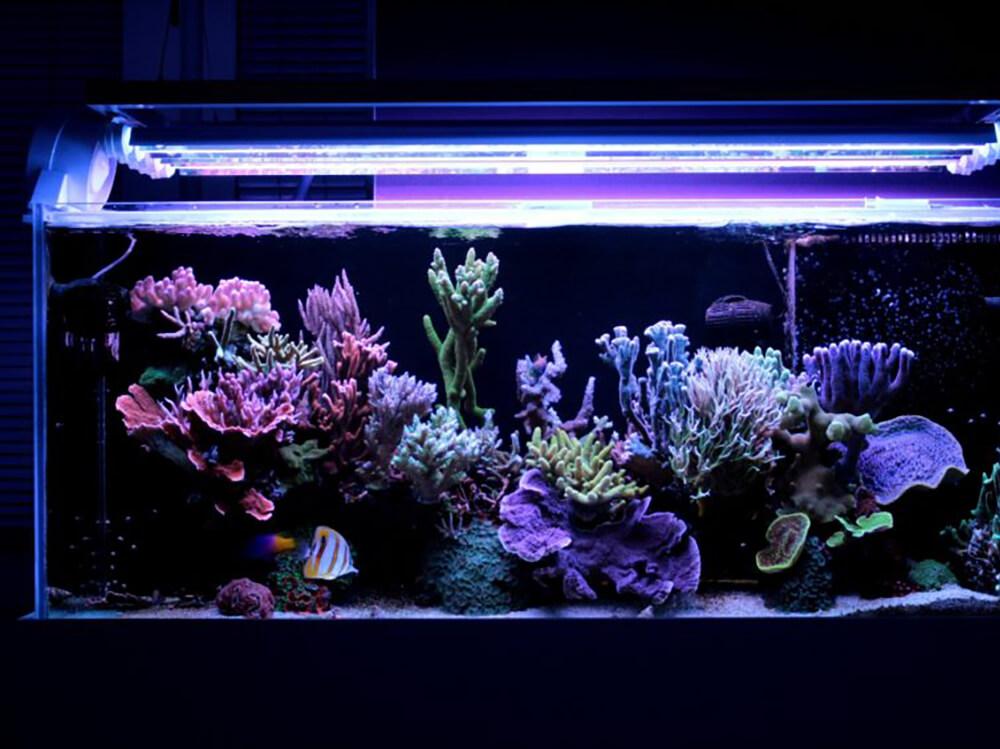Tank Light Bulbs: What colours do you need?
When it comes to lighting for your fish tank, it can be a minefield. Not only are there different fittings of bulbs to consider, but also it seems an infinite amount of variations in colours and names – is there really that much difference in them?
Firstly, let’s look at the basics. If you’re looking for high spec lighting for marine corals for example, this isn’t for you. That is a minefield all of its own! The main benefit of having lights is more than the obvious, to see the fish. Light will help with plant growth, which in turn will have a big effect on the quality of your water. Plants will utilise the pesky nitrate, which would otherwise cause algae growth, so correct lighting is an important thing.
Ideally you want your lights on for around 10-12hours a day – much more and there will be a bloom in algae, as there is enough food for that as well. Much less and you tend to find brown takes over from green, leaving your tank looking drab and unloved. This can vary from tank to tank though, and other factors will affect algae growth – including the number of fish, the amount being fed, the capability of the filter, and whether it’s in direct sunlight (getting more than the allocated 10-12hours you’ve decided).
The variety of lighting will all have their own benefits, which is what we want to look into. One you’ve decided which colours you want, it’s simple… just find out what fitting you have, whether you want fluorescent or LED, what wattage and length you need…. Phew!
Freshwater Lamps, or Warm-Lite bulbs, are designed for plant growth. They provide the main source of food for your plants, and will highlight greenery specifically, helping your tank to look healthy and alive. Although they can appear duller to our eyes, they are highlighting the same aspects that the sun would, giving you a natural appearance.
Tropical, or Colour-Lite bulbs, are designed for fish viewing. These accent red and blue hues, and are ideal for making your fish stand out better. They will give a much brighter visual, and mean that you see your fish more clearly and get the best out of them. The slightly different spectrum will also help with plant growth, though doesn’t change their appearance as much as the freshwater, or warm bulbs.
The White, or Day-Lite bulbs offer the best lighting in terms of brightness. It allows the best visual to see exactly what’s in the tank, and will highlight already bold colours, such as corals or red plants. It’s a high intensity bulb, which will have a big effect on plant growth as well.
Lastly, the Bulb bulbs are designed wit h a much lower spectrum, which is targeted more for marine environments, offering the best light for lower level light forms, such as symbiotic algae. Although this is thought of as a night bulb, and can certainly be used in that way, it can also be used alongside another bulb to give a natural glow.
h a much lower spectrum, which is targeted more for marine environments, offering the best light for lower level light forms, such as symbiotic algae. Although this is thought of as a night bulb, and can certainly be used in that way, it can also be used alongside another bulb to give a natural glow.
These bulbs originally all came as standard fluorescent strip T8 bulbs, but are more commonly offered as the upgraded thinner T5 bulb, giving a brighter and more efficient light, or even as retrofit LED bulbs, with the same fittings, but with the light being emitted from low wattage LEDs, drastically reducing your maintenance costs.
So which do you buy? Any or all of the above. These bulbs can be combined in any combination to get the effect you really want. That could be a green, a red and a white light, giving you the optimum spectrum. It could be green and white, highlighting your plants, and giving you a great visual spectrum to fully see your entire tank. If you don’t have live plants, then red and white light will work well to highlight the fish that you do have in there instead.









